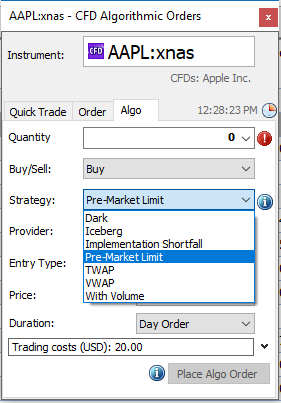brokerage
Dear Client,
Effective today, Global Trading will introduce an additional collateral haircut on stocks. The additional haircut will be applied only in the situation where, in addition to the stock, a long single stock CFD position is held. In this scenario, the additional collateral haircut on the stock value will be equivalent to the margin requirement of the CFD position. So, in practice, this means the “Not available as margin collateral” will increase by the margin requirement of the single stock CFD.
The haircut is introduced specifically to target concentration risk where clients have a very high exposure to the same underlying stock, without impacting clients that use the stock collateral to trade derivatives with different underliers.
Example:
Today for a rating 1 stock Global Trading’s default margin requirement is 10% and collateral haircut is 25% (75% collateral value).
Stock price is 100, client has 100 shares with a total value of 100 x 100 = 10,000 and a collateral value of 75% x 10,000 = 7,500.
Using this collateral, and assuming no unrealized p/l and no cash, if the client opens 150 CFD exposure his margin requirement would be 150 x 100 x 10% = 1,500 and his margin utilization would be 1,500 / 7,500 = 20%. When the new haircut is introduced then the collateral value will be reduced by 1,500 to 6,000 and the margin utilization would be 1,500 / 6,000 = 25%.
If we assume instead of opening 150 CFDs, the client rather opens 375 CFDs the margin requirement would be 375 x 100 x 10% = 3,750. In the old model with the old haircut, the MU would be 3750/7500 = 50%. With the new, reduced hair cut model, the collateral of the stock would be reduced to by 3,750 to 3,750 and hence the new MU would be 3750 / 3750 = 100%
At 750 CFDs the margin requirement would be 750 x 100 x 10% = 7,500 with the current model and hence would be 7500 / 7500 = 100%. With the new model including CFD margin requirement haircut, this size couldn´t be opened anymore, since (as we saw in example 2) the maximum is 375 CFDs due to the haircut in the amount of the CFD Margin Requirement reducing the stock collateral value of that same stock!
Please let me reiterate that this additional haircut is only applied to collateral value of the very same stock, where clients also open single stock CFDs in. If the client does NOT have the same stock + single stock CFD positions, no additional haircut is applied
Please note – this is a general email. If your account was set to be affected by this change, you would have been individually notified.
If you have any additional questions, please email us at [email protected]
















